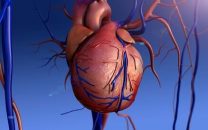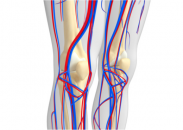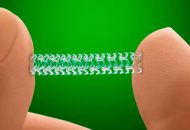In patients with peripheral artery disease undergoing revascularization, the combination of rivaroxaban (Xarelto) and low doses of aspirin are superior to aspirin alone in the prevention of acute low limb ischemic events, amputation, cardiovascular events and strokes. The outcomes of VOYAGER PAD add to the COMPASS outcomes, showing the combination of therapies can benefit risk…
Virtual ACC 2020 | COMPASS Sub-Analysis: Diabetes Increases the Benefit of Rivaroxaban Combined with AAS
In patients with stable coronary or peripheral artery disease, diabetes increases the benefit of combining low doses of rivaroxaban and aspirin vs. aspirin alone. This analysis was pre-specified in the COMPASS protocol and was presented virtually for the ACC 2020 and simultaneously published in Circulation. Patients with diabetes, showed numerically greater reduction in terms of…
New European Guidelines on the Management of Lower Limb Acute Ischemia
Clinical practice guidelines are usually tedious and, frankly, while a lot of people make an enormous effort to write them, they are ultimately read in full by just a few. These new European Guidelines on the Management of Lower Limb Acute Ischemia represent a special team effort, since they include physicians, cardiologists, surgeons, and interventionists,…
Exercise Programs in Peripheral Artery Disease
Programmed exercises are recommended as initial management strategy for patients with peripheral artery disease (PAD). Most exercise programs include supervised treadmill walking twice or three times a week in a strategic facility (such as a gym). PAD patients often give up on these programs seeing as they might find it difficult to keep to a…
HIV and Peripheral Artery Disease: Acknowledging the Association
The role of human immunodeficiency virus (HIV) in the development of vascular disease (specifically peripheral artery disease) remains unclear. Is the virus per se the direct cause of this disease or is it a consequence of dyslipidemia, one of the adverse effects of antiretrovirals? This study looked into the effect of HIV infection on peripheral…
What’s New in the European Guidelines on Peripheral Arterial Disease
Since the last version of the European guidelines on the diagnosis and treatment of peripheral arterial disease in 2011, there have been many trials and registries that warrant guideline adjustments in many aspects. The first novelty is the teamwork that gave way to these guidelines, which were written in collaboration with the European Society of…
What is the effect of statins on amputations, and survival in peripheral vascular disease?
The prevalence of peripheral arterial disease is between 15% and 20% of patients older than 65 years and its severity is greatly underestimated. In fact, annual mortality is higher in patients with peripheral arterial disease (8.2%) than in those after acute myocardial infarction (6.3%). Despite the above, medical advice and efforts to modify risk factors…
BVS: Safe Also in Peripheral Territory
Original Title: Bioresorbable Everolimus-Eluting Vascular Scaffold for Patients With Peripheral Artery Disease (ESPRIT I) 2-Year Clinical and Imaging Results CME. Reference: Johannes Lammer et al. J Am Coll Cardiol Intv. 2016;9(11):1178-1187. This is the first study on humans to assess the bioresorbable everolimus eluting vascular scaffold for the treatment of peripheral artery disease involving…







